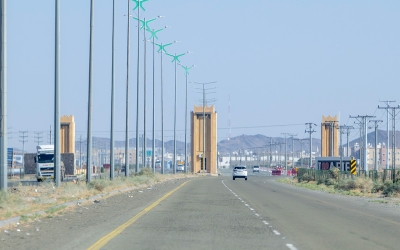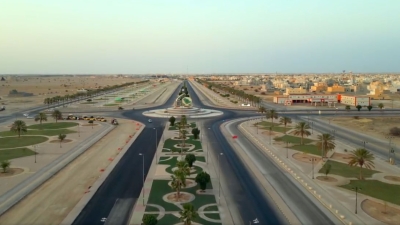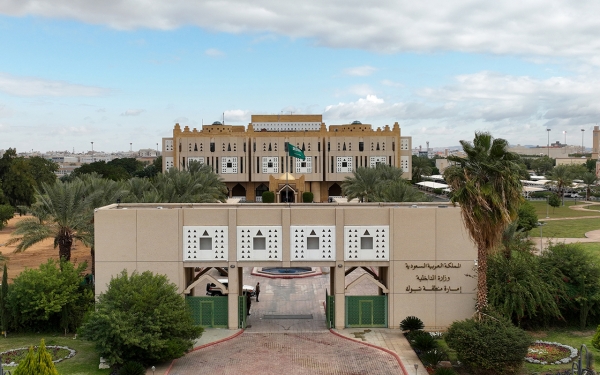
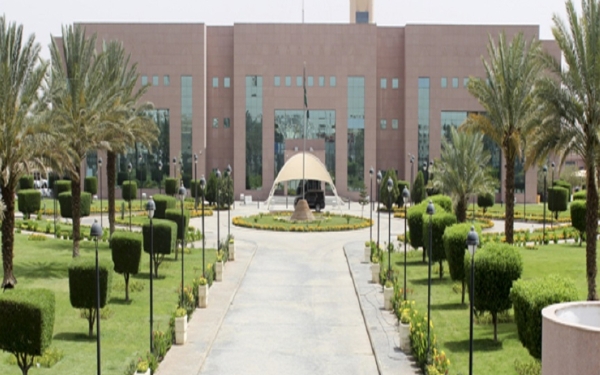
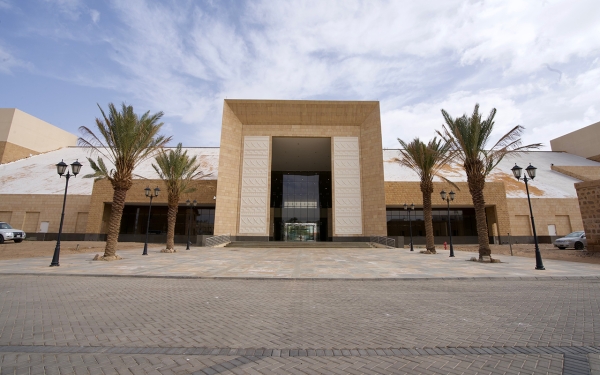
Tabuk City (Tabūk) is located in the northwest of the Kingdom of Saudi Arabia and is the regional center of Tabuk Province. It is the largest city and governorate in the province in terms of area and population. Its area is about 61,000 km.
History of Tabuk City
The population of Tabuk city is 623,665 people, constituting 70.4 percent of the province's population, according to the 2022 Saudi census. It boasts a dry desert climate. Its history dates back to five hundred years BC. It was known as 'Tabu' when it, along with the city of al-Ula, served as the capital for the Lihyanites. The city is rich in historical relics, some of which date back to the period before the emergence of Islam and others from the time after. It was a thoroughfare for trade caravans traveling from the south to the north and vice versa. As such, it stands as a city that bridges the authenticity of the past with the modernity of the present.
Designation of Tabuk
There are multiple theories regarding the origin of Tabuk's designation. However, it is established that it was known before the mission of the Prophet, peace be upon him (PBUH), when he said to his companions while they were on their way to invade it under his leadership: 'Tomorrow, Allah's willing, you will come to the spring of Tabuk, and you will not reach it until midday. Whoever among you arrives at it should not touch its water until I come.' It is said that the origin of the name is the word Tabu or Taboo, a Latin term meaning isolated place. This is because Tabuk was isolated from the Arabian Peninsula to the south and from the Levant to the north. It is known in sources for the Tabuk Expedition and for the spring that the Prophet (PBUH) brought forth when he camped there. Its mosque, which is attributed to the noble Prophet (PBUH) is called al-Tawbah Mosque. It is among the mosques that Umar Ibn Abdulaziz built during the Umayyad era using engraved stones.
Tabuk city mention in the Islamic era
In the Islamic era, mentions of Tabuk began to emerge in discussions about the Expedition of Tabuk or the Expedition of Usra, which was led by the Prophet Muhammad (PBUH) to confront the Romans. After this expedition, Tabuk became one of the most important regions of the Islamic state and remained a significant gateway for the peninsula towards the Levant. Tabuk represents one of the manifestations of the rapid development that the Kingdom is experiencing, embodying a comprehensive urban and civilizational renaissance. Developing economic capabilities, especially in the field of agriculture, and paving the way for more and more progress and sophistication, which a visitor can immediately notice upon arriving in Tabuk, brings images from the recent past to his mind, reflecting how things once were, and he witnesses the wonders of achievements and how they have evolved. Thus, speaking about Tabuk Province is a conversation about a rich past and a bright present.

Location of Tabuk
Tabuk City is the regional center of Tabuk Province. It is located northwest of the Kingdom at latitude 26°56' and longitude 28°49'. It is approximately seven hundred km north of al-Madinah al-Munawwarah and 1,350 km from Riyadh. It is also situated on a low-lying plain, with an elevation between six hundred and eight hundred m above sea level. Tabuk is known as the Northern Gateway due to its distinguished geographical location.
Climate of Tabuk
Tabuk City is characterized by a dry desert climate, with a maximum temperature of 28.7 degrees Celcius, a minimum of 15.5 degrees Celcius, and an average of twenty-one degrees Celcius. It enjoys an average rainfall of thirty-nine mm.
Education in Tabuk
Formal education in Tabuk Province began at the outset of 1926. The first school in Tabuk City was inaugurated in 1947 and named the Saudi School. This initiative was under the guidance of the founder, King Abdulaziz Bin Abdulrahman Al Saud. Initially, the school served students whose number at that time did not exceed forty. The school was constructed of mud and stone and consisted of only four rooms. The core curriculum comprised the Holy Quran, Tawheed, Fiqh, calligraphy, dictation, and arithmetic.
Education in the public sector
The number of boys' primary schools reached about eighty-nine, with 1,058 classrooms and 28,835 students. The number of boys' middle schools reached fifty-six, with 441 classrooms and 13,795 students. Boys' high schools reached forty, with 228 classrooms and 11,673 students. On the other hand, the number of girls' primary schools reached about 104, with 1,214 classrooms and 32,842 students. The number of girls' middle schools reached sixty-five, with 452 classrooms and 14,907 students. Girls' high schools reached fifty-five, with 361 classrooms and 15,908 students.
Education in the private sector
The number of private boys' primary schools reached about nineteen, with a total of 369 classrooms and 8,702 students. The number of private boys' middle schools reached sixteen, with 122 classrooms and 3,177 students. The number of private boys' high schools was ten, with 145 classrooms and 4,025 students. On the other hand, the number of private girls' primary schools reached about nineteen, with 198 classrooms and 3,515 students. The number of private girls' middle schools reached eleven, with fifty classrooms and 1,053 students. The private girls' high schools reached nine, with forty-six classrooms and 1,945 students.
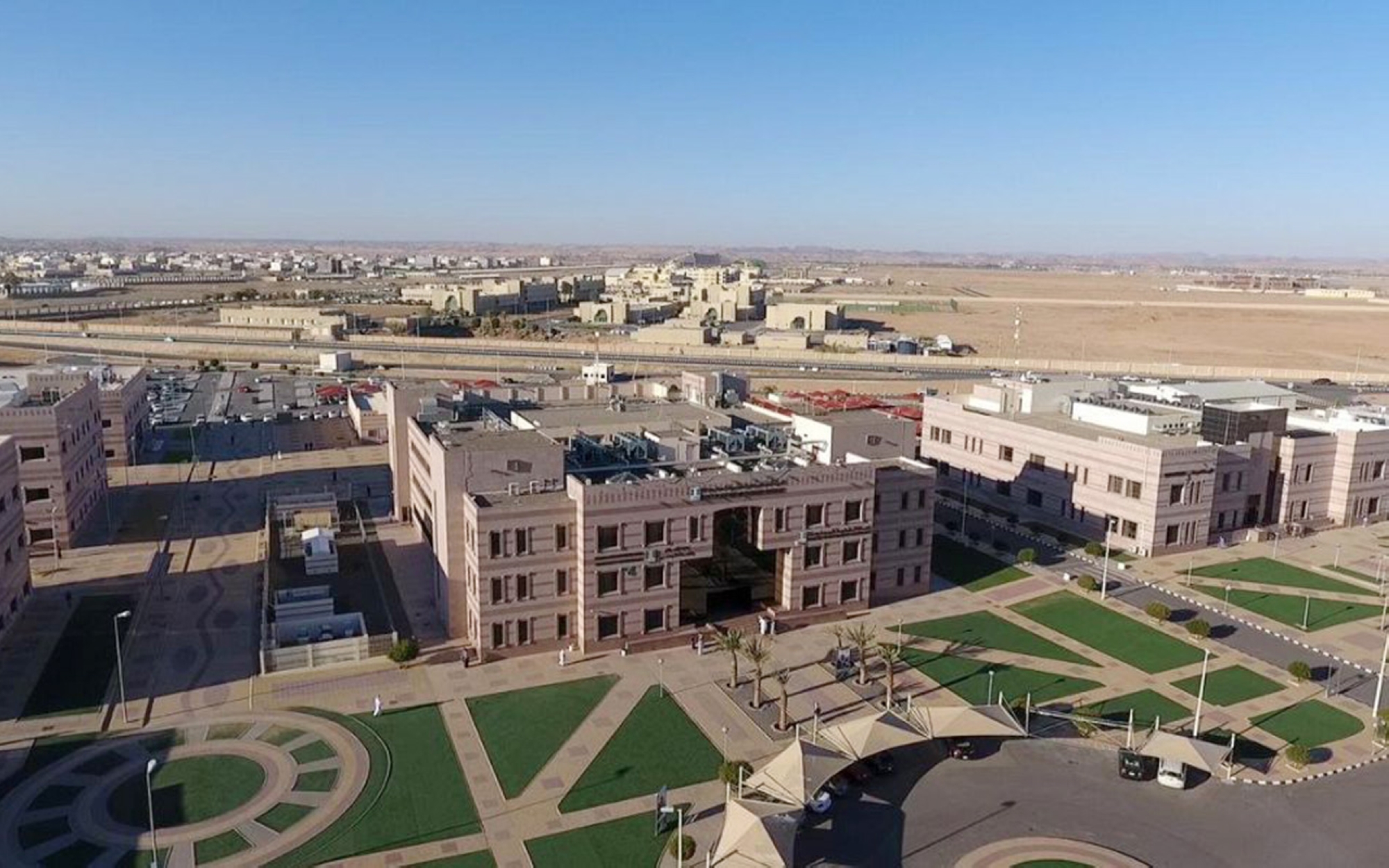
Higher education
The University of Tabuk was established in 2006 with about 36,000 male and female students. The main university campus is located in Tabuk City, Tabuk Province. The university has several branches in all the governorates of the province. The university includes the following faculties: Faculty of Medicine, Faculty of Engineering, Faculty of Applied Medical Sciences, Faculty of Science, Faculty of Computers and Information Technology, Faculty of Education and Arts, Faculty of Home Economics, College of Community, Faculty of Sharia and Law, Faculty of Business Administration, Faculty of Pharmacy, Faculty of Art and Design, University College in Duba Governorate, University College in al-Wajh Governorate, University College in Ummlujj Governorate, University College in Haql Governorate, and the University branch in Tayma Governorate. The university also includes the following centers: the Research Center for Sensor Networks and Cellular Systems, the Renewable Energy Research Center, the Industrial Innovation and Robotics Center, and the English Language Center. The university campus covers an area of twelve million m. The following programs at the university have received academic accreditation from the respective international entities:
- The technical and vocational education program for the pre-bachelor's stage in the College of Community has been accredited by the Academic Accreditation Council, accredited by the Ministry of Education in the United States of America.
- The mechanical engineering program in the Faculty of Engineering, accredited by ABET.
- The computer science program from the Faculty of Computers and Information Technology, accredited by ABET.
- The mathematics program in the Faculty of Science, accredited by ASEN.
- The English language program in the Faculty of Education.
Cultural movement in Tabuk City
Literary Club
The Literary Club in Tabuk City was established in 1995. It comprises two floors with two halls, a library dedicated to publications, ten administrative offices, and a meeting room. The club undertakes several responsibilities to serve the community through various literary and cultural paths. These include publishing books, participating in international book fairs, organizing seminars and lectures, conducting workshops and training courses, hosting forums, highlighting active figures, and building cooperative bridges with numerous governmental and private entities with which it collaborates for cultural enrichment in the community. The club's publications have reached around 115. Among the most prominent are periodicals named 'Afnan', 'Difaf', and 'Hisma', in addition to a collection of publications from leading writers and poets in the Kingdom and the Arab world. The club also supports young authors and emerging creative talents.
Tabuk Library
The Public Library in Tabuk contains more than 35,000 titles of Arabic and foreign books, distributed over an area estimated at 3,500 m, in addition to references, periodicals, reports, bulletins, photographs, paintings, manuscripts, documents, and audiovisual materials in various fields of knowledge, especially Islamic and Arabic sciences. The library consists of three floors. The first floor houses an information center, reading and study halls for men, women, and children, learning resources, an internet hall, and sections for periodicals, magazines, and newspapers. The second floor is allocated for meeting rooms, event spaces, exhibition areas, a reading hall, and administrative offices. The third floor is allocated for cataloging and classification. Additionally, the library offers various services, notably photocopying, a lending service for everyone (according to certain controls), book reservations and private study rooms for researchers, and providing technical consultations in the field of libraries to schools upon request.
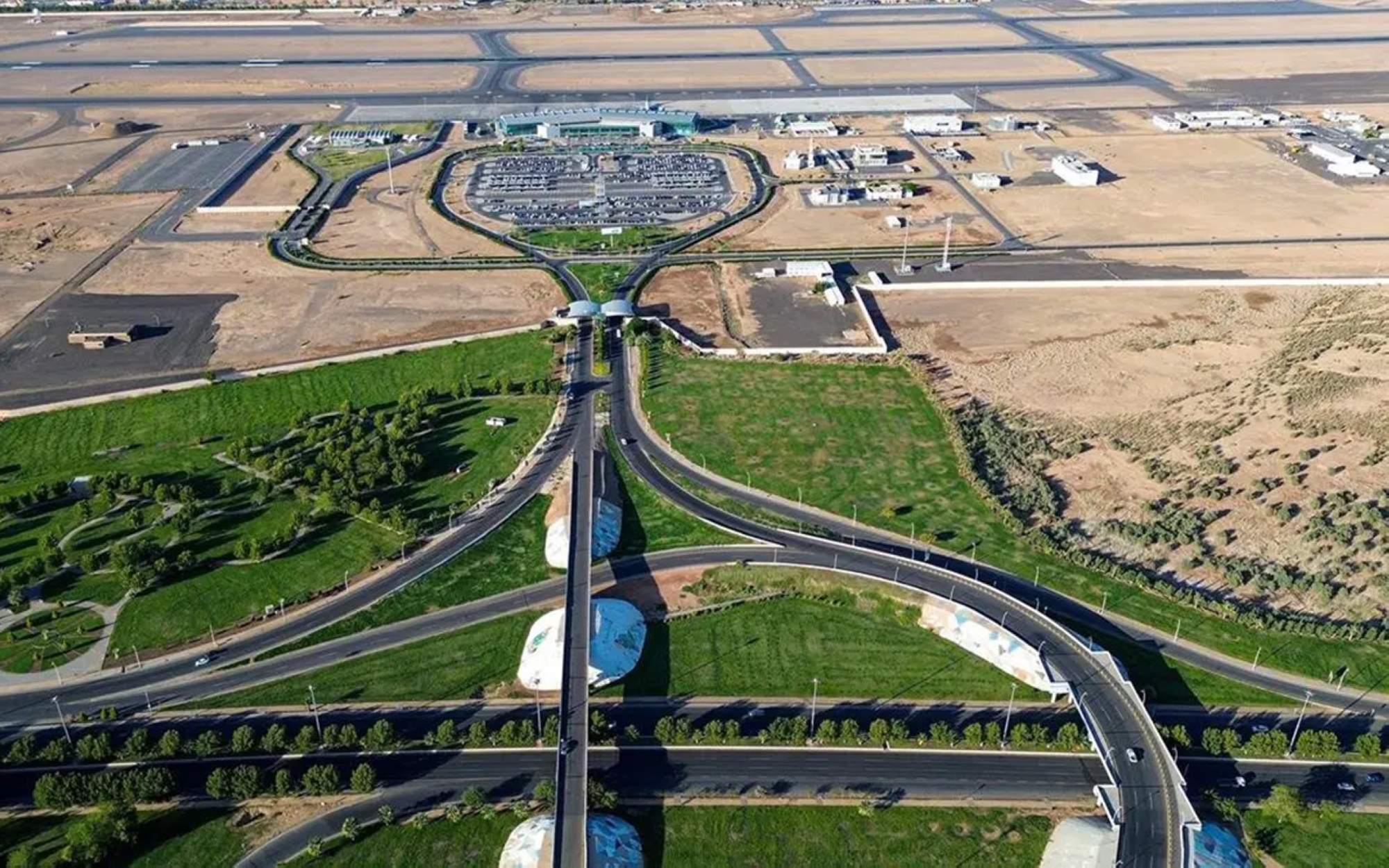
Economic dynamism in Tabuk
Tabuk Airport
Prince Sultan Bin Abdulaziz International Airport in Tabuk Province is considered one of the most important projects supporting the aerial transportation movement in the Kingdom in general and the region in particular. It also serves as a window to the world for major economic projects located in the northwest of the Kingdom, including the NEOM and Amaala projects and the Red Sea Project. The airport is situated no more than 177 km from the NEOM Bay International Airport. The airport is the seventh airport affiliated with Saudia in terms of passenger volume and number of flights. It was built in the early 1970s and initially served as a dirt runway until it was developed in 1978 and then transformed into a military base. In 2011, the airport became an independent international airport separate from the base with a cost of around SAR242 million and a total area of approximately 16,400 m². It can accommodate up to 1.5 million passengers annually. Currently, the airport offers flights to three international destinations: Dubai, Sharjah, and Cairo. These routes are operated by four airlines: FlyDubai, Air Arabia, Nile Air, and Nesma Airlines. There are also flights to three domestic destinations: Riyadh, Dammam, and Jeddah, operated by three airlines: Saudia, Flyadeal, and Flynas.
Millitary City
The military city is located south of Tabuk and is a comprehensive city divided into multiple complexes. These include the military city, the airbase, the air defense forces complex, and the armored corps complex. It has a population of over two hundred thousand people. It also has one of the best hospitals in the region, King Abdulaziz Hospital.
Sports in Tabuk
The Saudi Falcons Club in Tabuk was founded in 1965. It features various sports, including table tennis, weightlifting, judo, football, volleyball, karate, and taekwondo. The number of registered players reached 415, and the club is affiliated with seven federations.
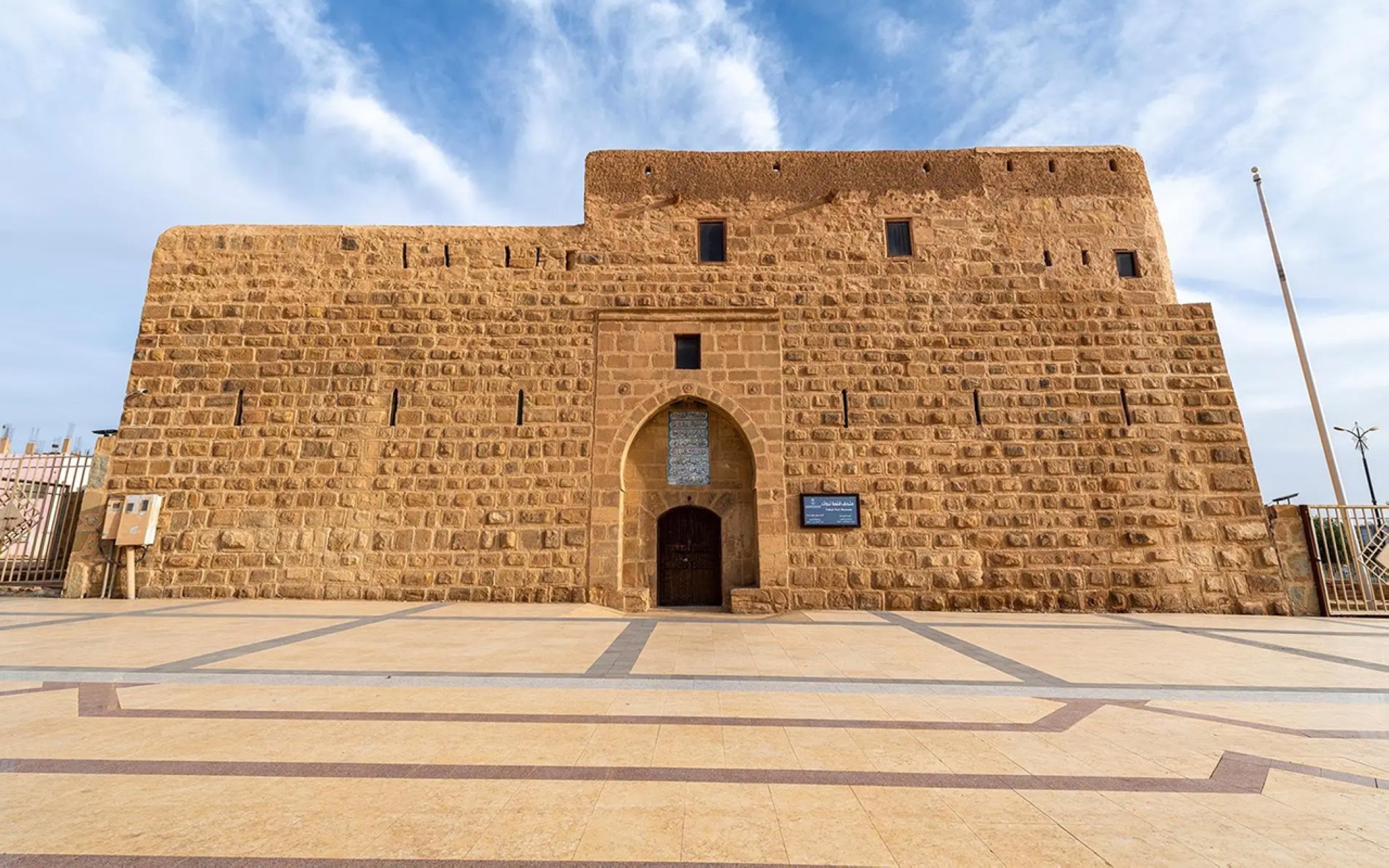
Archaeological landmarks in Tabuk
Tabuk Castle
Located within Tabuk, it was built during the era of Sultan Suleiman the Magnificent in 1559. It is also called the residence of the dwellers in the wood, mentioned in the Holy Quran. The castle is estimated to be about 3,500 years old and has been renovated several times. Inside the castle, there is a courtyard with a well, bedrooms on the southern and northern sides, and a prayer area on both the first and second floors.
Tabuk's historical castle is one of the most important landmarks and historical testimonies in the province due to its connection to the location where our beloved Prophet Muhammad (PBUH) stayed during the Tabuk expedition. The castle also stands as one of the stations on the Levant Hajj route, linking the Levant to al-Madinah al-Munawwarah. It underwent renovation in 1653. In 1844, the castle was fully restored and renovated once again. A special inscription marking this occasion was placed in the mosque's mihrab. The castle was then renovated in 1951 and underwent comprehensive restorations in 1993 by the Agency of Antiquities and Museums under the Ministry of Knowledge (currently known as the Ministry of Education). It was renovated again in 2013 by the General Commission for Tourism and National Heritage (currently the Ministry of Tourism). It has been prepared to become the archeological Tabuk Castle Museum. The castle consists of two floors: a first floor with an open courtyard, several rooms, a mosque, and a well. The upper floor is connected by stairs leading up to it, and it also contains an open summer mosque and rooms, in addition to other stairs leading to the towers, which are used for guarding and observation. There are also the Sultanic Ponds behind the castle, which are distinguished by their precise construction, as they consist of two ponds, one square and the other rectangular.
Al-Tawbah Mosque (the Prophet's Mosque (PBUH))
It is also called the Prophet's Mosque (PBUH) because he (PBUH) performed prayers for several nights during the known expedition of Tabuk. The mosque was originally built from clay and roofed with palm fronds. Its construction was renewed by order of King Faisal Bin Abdulaziz Al Saud during his visit to it. The new structure closely resembled the specifications of the Prophet's Mosque in al-Madinah al-Munawwarah.
Hejaz Railway Station
It is one of the stations of the Hijaz Railway, which used to stretch between al-Madinah al-Munawwarah and Damascus but was destroyed during World War I. It is one of the main stations, consisting of a group of buildings within Tabuk City. The first train arrived there in 1906, and it has been recently renovated to become a landmark of the province.
Ain al-Sukkar
Ain al-Sukkar is the oldest spring in Tabuk and was the sole source for irrigating crops there. It is said that the Prophet Muhammad (PBUH) stayed near it for about ten nights and drank from it with his companions. Initially, the spring had little water until the Prophet Muhammad (PBUH) washed his face and hands in it, after which the spring gushed forth with abundant water for people to drink. Then, the Prophet (PBUH) said: 'O Mu'adh, if you live long, you will see what is here filled with gardens.' The spring is located southwest of Tabuk Castle.
Heritage in Tabuk
Handicrafts and folk crafts
Manufacturing of home furnishings and Bedouin tents
This manufacture is distinctive to Tabuk Province. The primary material used is livestock wool. It is dyed with dyes that are either locally produced or imported from the Levant. Homes are carpeted with large wool pieces. Their crafting involves spreading the wool threads in opposite directions. Typically, they are made by women, and their quality varies depending on the skill of the housewife. As for the Bedouin tents, they are also crafted from the threads of livestock wool, spun by the hands of women. As for tent craftsmanship, men also participate in its design by gathering the tent poles to form the tent and erecting it on two, three, or more supports.
Al-Ashiddah crafting
Al-Ashiddah (singular form: al-Shaddad) is what is placed on the back of a riding animal, a saddle used by the Bedouin. It is made of wood, and its parts are assembled using camel leather or its tendons after drying. Al-Shaddad is made from a special type of wood or thick bamboo sticks. The craft of making al-Hawdaj is also widespread in this province, and al-Hawdaj is also placed on the back of a camel, but it is specific to women. It covers the woman and protects her from the heat of the sun, rain, or anything else while the tribe travels from one place to another. It is also where the bride is placed during her wedding as she moves from her family's house to the groom's house. These items are crafted by men's hands.
Manufacturing of boats and sailing ships
The people of the coastal governorates in this province were renowned for this craft in the past, and it was even exported to coastal areas along the Red Sea. Al-Wajh Governorate, in particular, excelled in shipbuilding and marine fishing equipment, as mentioned by al-Hamawi in his history of the northwestern region.
Manufacturing of bladed weapon
The crafts related to manufacturing swords and daggers were limited to a specific group responsible for manufacturing and sharpening swords and daggers. This group is under the protection of the tribe because it is not a member of the tribe. This group is also responsible for the maintenance of the coffee dallahs (pot), known as al-rab, crafting horse saddles and their accessories, and manufacturing axes and water containers.
Traditional foods
Fatteh
The dish known as Fatteh goes by several names, including al-Mujallalah and al-Khumai'ah. It consists of bread that is placed directly on hot coals. Once it is toasted, it is rubbed, and ghee is poured directly on it.
Mafroukeh
It is a round-shaped dough that is buried in the embers, then cut, mixed with dates or honey, ghee, and rubbed, which is why it's called Mafroukeh (derived from the Arab verb faraka, which means to rub).
Jareesh
It is the well-known Jareesh, which consists of crushed wheat grains cooked with milk and topped with a small amount of ghee once it's done cooking.
Al-Mujallalah and al-Khumai'ah
It is a type of bread known as qurs, baked on fire, cut into pieces, soaked in yogurt, kneaded, and then drizzled with ghee.
Mansaf
It consists of three main components: meat, rice, and Shirak bread. However, the meat is cooked with yogurt, then Shirak bread is placed on top and covered with rice.
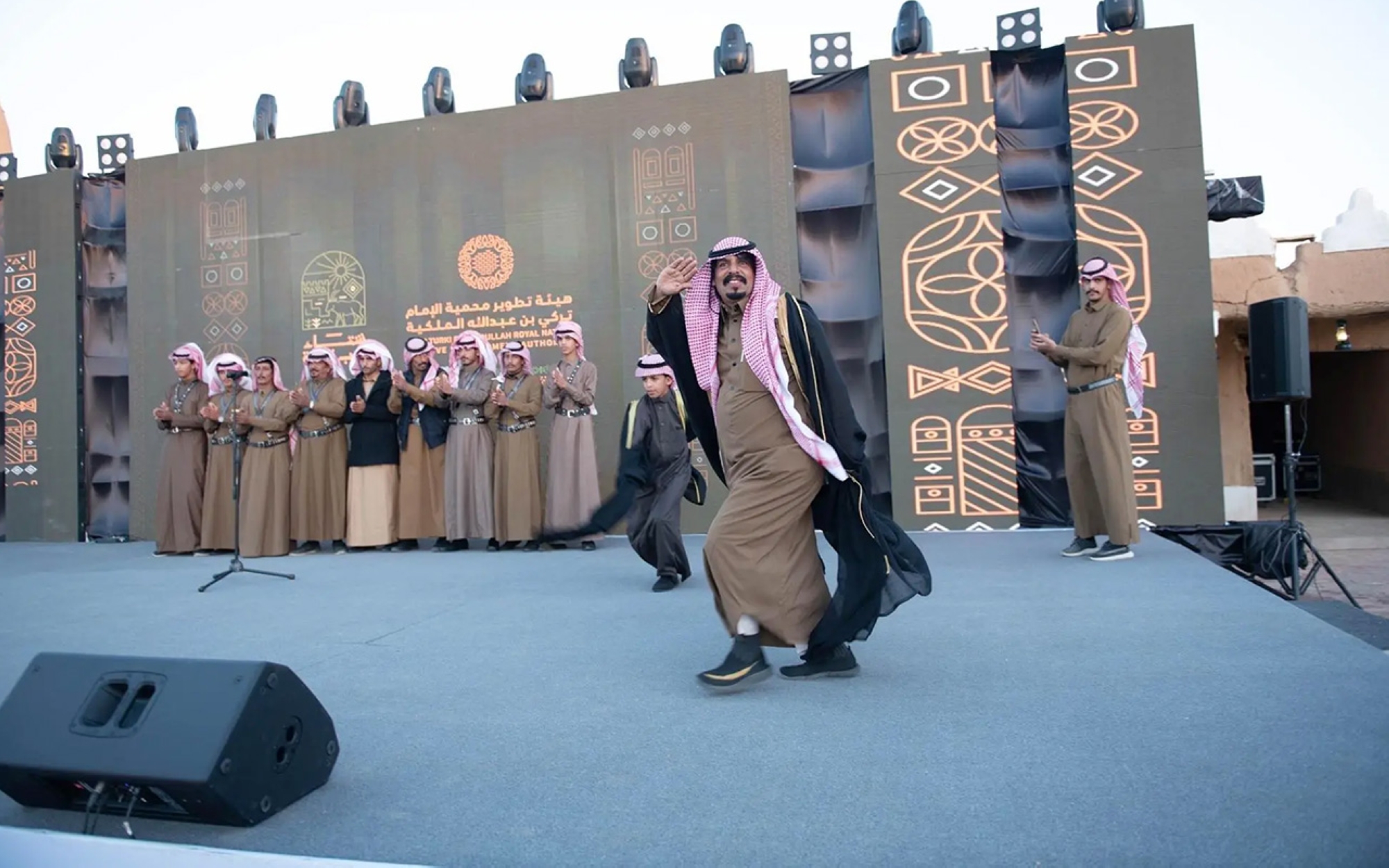
Folk arts
Al-Dahiya: this style is found in both the northern and northwestern regions of the Kingdom. However, there are slight differences in musical rhythm between these two regions and al-Dahiya. Enthusiasts of folk heritage art refer to it as Anfas al-Fursan (The Breaths of the Knights). It is performed collectively, with its performers forming two opposing rows, and the poet stands in the middle of one of the rows to recite his melodious poem.
Al-Hajini Style: a famous style among tribes across the Arabian Peninsula, but this province has excelled above others in producing poets of this style.
Al-Rafeehi: a distinctive style among the common folkloric styles in Tabuk Province. It is performed on public and private occasions, accompanied by several melodies, often with a tambourine. This style is known for being performed by the people of the coastal governorates in the province. Its melodies often resemble the poetry style of Qaltah. In this style, two poets stand between two rows of men. The first poet recites a couplet of sung poetry, and the second responds with a similar couplet in terms of meter and rhyme. This beautiful art, with its graceful movements, melodies, and rhythmic patterns, is celebrated throughout this province by the tribes of Bali and al-Huwaitat. It is described as the most comprehensive and beautiful artistic heritage in the province.
Al-Rihaan: a style that resembles al-Rafeehi, although it is performed collectively without rhythmic accompaniment. It is performed by one of the tribes of 'Bani Atiyah' and one of the tribes of al-Huwaitat. These two tribes are neighbors, which has resulted in significant similarities in this style.
Al-Khabeeti: a well-known folkloric style in the western region. This folkloric style is performed in the southern part of the northwestern region, often by the residents of the coastal areas adjacent to al-Madinah al-Munawwarah, and it is most famous in Yanbu City.
Al-Sameri: a well-known folkloric style among the people of the Arabian Peninsula. Its performance and melody have remained consistent with what was known in the past. The tambourine is often used to provide its distinctive rhythm. It is mostly performed by the tribes of Tabuk, 'Unzah' and 'Shammar', and enjoys popularity and recognition in the Tayma' Governorate.
Al-Simsimiyah: a distinct folk art known to the general public. It represents the musical tradition of the western coast, spanning from the southern to the northern regions. al-Simsimiyah poems often carry deep meanings and symbolism. It is commonly used to express the melodies of maritime poems sung by sailors during fishing trips to entertain themselves.
Al-Rababa: an ancient musical instrument used by the people of the desert. It is played to accompany the melodies of Nabati poems. The most beautiful pieces of Nabati poetry, often sung with the rababa, belong to the Mashoub style. Many people from the Arabian Peninsula have become famous for singing and playing al-rababa in modern times.
Related quizzes
Related articles

